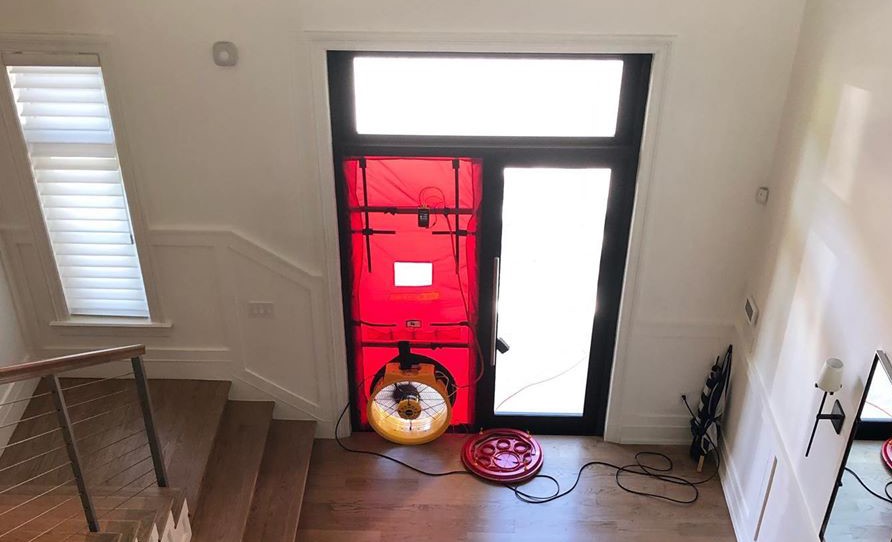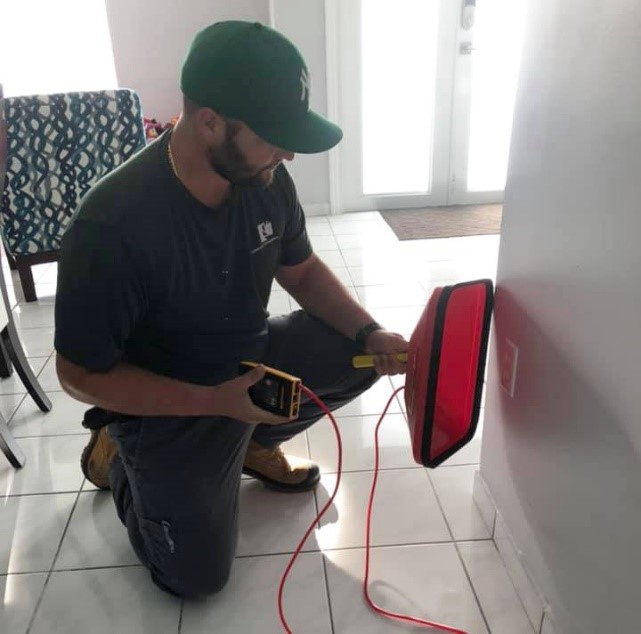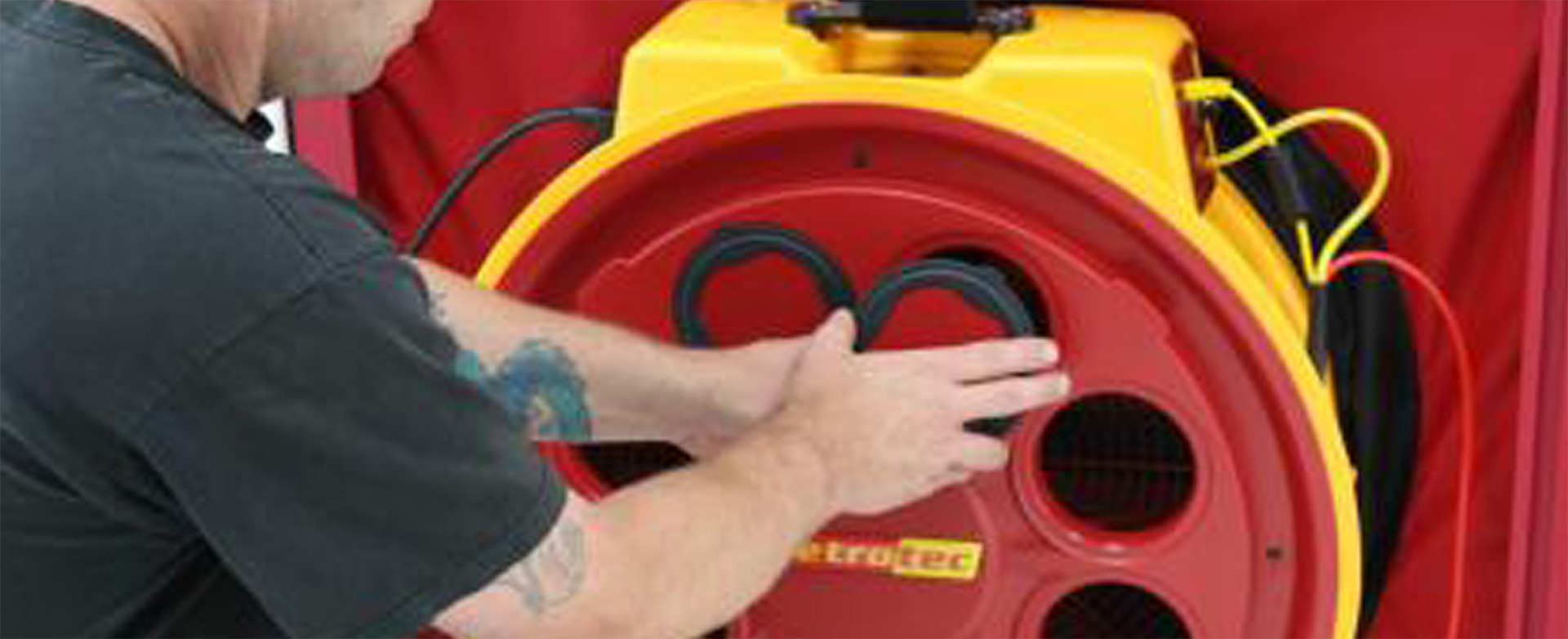An HVAC Industry Game Changer: HVAC 2.0

Blower-door assisted load calculations are boosting profits and customer satisfaction and reducing risk for forward-thinking contractors.
If you've been following the latest industry buzz you may have heard of HVAC 2.0 (formerly Home Performance 2.0). It's a real game changer that every HVAC contractor in the residential market needs to check out. Here's why.
The “2.0” suffix suggests an improvement to the status quo. That's certainly the case here. HVAC 2.0 is a new, consultative sales process designed to help contractors close more business at higher ticket prices, by helping customers solve their real comfort problems. And it's structured so that the initial consultation can be done effectively by an entry-level sales tech.
How It Works
HVAC 2.0 is the brainchild of Nate Adams of Energy Smart Home Performance, a Cleveland Home Performance consultancy. HVAC 2.0 begins with a scripted interview to help homeowners discover and rank problems they'd like to solve at the critical juncture of replacing heating and cooling equipment. The goal is to help homeowners understand that comfort is more than mechanical equipment, and that truly addressing their needs may require blower door, and possibly other diagnostic tests.

At the heart of the interview process is a simple offer to the homeowner: "Do you want to go down Path A or B?"
At first glance, Path A is the conventional route of a free quote to replace the current system with a new one offering the most equivalent available specs. However there's a twist. The script makes it clear that this path may not be the best one, and that the contractor makes no comfort promises. Homeowners naturally assume responsibility for the results of following Path A.
If the homeowners choose instead to go down Path B, the tech initiates a detailed consultation that starts with questions about their comfort complaints, goals, budget, and experience. During this conversation, the tech listens to the homeowners' concerns and gets a full picture of the experiences they’ve had while living in their home. That information is very helpful when prescribing and sizing the new system.
As I mentioned, the conversation is scripted and easy for an entry-level employee to master. Path B also includes a blower door test, which anyone can easily learn to do. The entire process takes a couple of hours and Adams recommends a fee of around $300 to $400.
 Photo courtesy of Comfort Dynamics Inc.
Photo courtesy of Comfort Dynamics Inc.
Pictured here is a blower door running to measure air leakage in a home.
The big advantage of Path B beyond giving the homeowner a much better understanding of their home is that it yields a very accurate load calculation and makes it possible for the contractor to prescribe equipment that is a much better fit for the homeowners' needs. "It's a consultative process, and you both share responsibility for the outcome," says Nate.
A Better Home
To determine if there are significant enclosure problems, the tech may suggest building a more thorough plan. As Nate puts it: "HVAC is only half the comfort equation. If the house is leaky, HVAC is probably a lot less than half of the cause of homeowner problems and complaints." With a thorough specification and project plan, the homeowner can get apples to apples bids from home performance and insulation contractors. In most cases, the homeowner is given a few upgrade combinations to choose from. That's because with building science issues, there is more than one way to skin a cat and the solution has to fit the budget. Choices also give the homeowner ownership in the process and help create a collaborative solution oriented relationship between contractor and homeowner.
Once the HVAC and/or performance upgrades have been completed, the contractor comes back to review operation and seasonal setup with the homeowner. Often, the new system is much smaller than the one it replaces. This is because most contractors use a “rule-of-thumb” sizing method which severely oversizes the equipment causing a range of issues that affect comfort and efficiency. Proper system sizing is an important feature of HVAC 2.0 that helps deliver really great results. "Smaller equipment means better comfort," says Nate. "It runs more, gives a gentle flow of heated and cooled air, improves balance, and mean radiant temps."
Documented Returns
Although the HVAC 2.0 process is fairly straightforward it's a fairly significant mindset shift. Even though building envelope issues are behind many comfort, energy, moisture, and IAQ problems, HVAC techs usually don’t have the tools to uncover or measure these problems so they simply aren't trained to consider them. When asked by the homeowner to address a comfort problem, most can only address the heating or cooling system portion of the equation. In many cases, the system gets replaced but comfort problems remain, and the homeowners still aren't happy.
But learning to think more broadly about comfort is worth the effort, according to talented techs in different parts of the US who have bought blower doors and implemented HVAC 2.0. Benefits they report include the following:
- They now close around 70 percent of sales calls. That's compared to the industry average of 20 or 30 percent.
- They no longer have to provide free consulting.
- They're getting much more positive customer feedback that drives further sales.
The feedback is due to HVAC 2.0’s post-work customer surveys. The surveys provide a critical feedback loop that helps solve what has always been a huge challenge for quality contractors. "The curse of the contracting business is that whoever tells the best story usually gets the job. There are no real outcome metrics by which to compare contractors," says Nate. He is confident that scores from satisfied homeowners will drive closing rates up for contractors who use the HVAC 2.0 system to collaboratively solve homeowner problems.
He also believes that, over time, the survey results will be a catalyst that raises the quality bar for the HVAC industry as a whole, the same way surveys like those by JD Power have improved the quality of cars. "Newer cars have far fewer problems than in the past," he says. "Part of that is because no car manufacturer wants to rank low on those quality surveys. Without explicit reward for better outcomes, all they do is add to costs."
Program Requirements
It should be obvious that to participate in HVAC 2.0, the tech needs a blower door. You can’t measure overall air leakage, pinpoint problem areas or create a menu of solutions without one.
The tech will also need other tools such as an IR camera. a smoke emitter, and perhaps a pressure pan. The barrier to entry is pretty small, the biggest requirement is desire to try a new approach.

With the blower door running, a pressure pan is being used
with a DM-32 manometer to locate leaks.
Contractors using HVAC 2.0 report that the test equipment pays for itself even if they don’t use it. By allowing them to offer leakage measurements and have the homeowner decline, it repositions the contractor/client relationship and responsibility for outcomes. It's an affordable innovation that gives techs the tools they need to solve problems if desired, manage accountability if not, and take on bigger jobs.
It also forces them to think outside the box. Literally. No box swapping allowed here. HVAC 2.0 pushes participants to size equipment properly by doing a load calculation with MEASURED leakage. In addition, Nate and his crew are currently building software that will use data from completed jobs to improve the process as years go by.
If you want to learn more, my colleague Sam Myers invited Nate to talk about HVAC 2.0 during a Retrotec webinar last year that you can find on our YouTube channel.
To learn more about Nate Adams and some of his other work, check out the following:
Energy Smart Ohio conducts home comfort and energy assessments and manages renovations to upgrade building enclosures and HVAC systems of homes suffering from moisture, mold, energy, IAQ or comfort problems.
His website, NateTheHouseWhisperer.com is full of home performance resources and materials to guide homeowners and contractors down the correct path to fix sick houses.
Lastly, Nate is the author of the Home Comfort Book, which is available from Amazon.eom. We see that book as the ideal starting point for anyone wanting to learn about home performance, including how the tools Retrotec makes are used to measure and expose problems.




